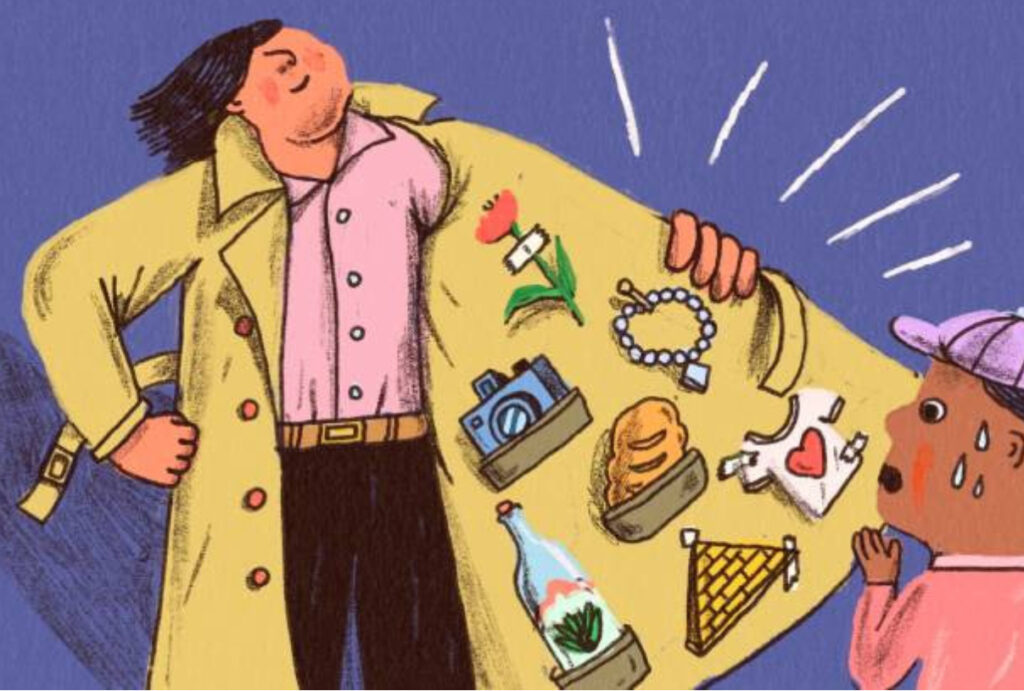These days, it’s not enough to crush it at your 9-to-5. If you’re not using your evenings and weekends to build a second income stream—or at least post about trying—you’re behind. The rise of the “5-to-9” hustle culture has turned spare time into a marketplace, hobbies into gigs, and passion into product. But is this just entrepreneurial spirit evolved—or a symptom of burnout capitalism?
What started as a clever name for productivity videos on TikTok has now become a blueprint for living. Influencers push monetization tutorials. Finfluencers break down affiliate links and e-commerce margins. And average people—baristas, teachers, accountants, students—are clocking extra hours to launch Etsy shops, ghostwrite newsletters, flip furniture, sell digital downloads, or manage microbrands from their bedrooms.
In this editorial, we take a long, sharp look at the modern side hustle. What’s everyone doing on the side, and what are they really getting out of it? We break down the economics, the psychology, the community, and the unspoken toll behind the hustle boom.
The Rise of the Hustle: From Survival to Identity
Side hustles used to be about survival. Driving Uber to cover rent. Selling crafts to pay student loans. Now they’re often framed as a path to self-actualization. But survival never really left the picture—it just got rebranded.
More than 44% of working adults in the U.S. have some form of side hustle, according to recent surveys. That number is higher among Gen Z and Millennials, many of whom came into adulthood during economic chaos: recession, pandemic, inflation, housing crises, tech layoffs. The message has been clear: your job might not be enough. So make something extra. Make something yours.
This leads to a tricky cocktail of ambition, anxiety, and aspiration. The hustle becomes not just a money move, but a personality trait. You’re not just someone who sells vintage T-shirts online. You’re a founder. You’re building a brand. Your Google Sheet budget is color-coded. Your Amazon storefront is curated. You’ve got goals. And a vision board. And burnout. But you keep going—because stopping feels like falling behind.
Who’s Hustling—and How?
The side hustle landscape in 2025 is more crowded and diverse than ever. Here’s a breakdown of common lanes people are operating in:
Digital Microbusinesses
Think Canva templates, Notion planners, Lightroom presets, Substack newsletters, and downloadable workout guides. The overhead is low, the platforms are accessible, and the potential audience is global. Passive income? Sort of. You’ve still got to market, maintain, and sometimes reinvent the product.
Content Creation
From niche YouTube channels to TikTok tutorials to OnlyFans accounts, content is currency. Many turn hobbies—gaming, cooking, beauty, commentary—into income via sponsorships, ad revenue, or subscriptions. But the mental grind of constant visibility is real.
E-commerce & Flipping
Reselling on Depop, Etsy, eBay, Facebook Marketplace, and Poshmark is booming. Some thrift and flip. Others design and drop-ship. Either way, it’s a logistics-heavy hustle that rewards aesthetics and SEO as much as product.
Freelancing & Consulting
Writers, designers, coders, marketers, and career coaches offer services on Upwork, Fiverr, or independently. Side gigs in this lane often blur into full-blown careers. But juggling freelance with a full-time job can wear you thin.
Gig Economy Apps
Instacart, TaskRabbit, Rover, DoorDash—the app-based gig economy still thrives. It’s flexible, relatively quick to start, and tangible. But it’s also physically draining and often pays below minimum wage once you factor in expenses.
The Psychology Behind the Hustle
Let’s get real: Not everyone wants to be an entrepreneur. But many feel like they have to be. There’s a creeping fear that if you’re not turning your free time into money, you’re wasting it—or worse, wasting your potential.
That pressure is especially intense in an economy where wages haven’t kept pace with inflation, and the dream of homeownership feels out of reach for millions. Side hustles are often romanticized as empowering, but they can also be exhausting. The line between work and life blurs, and “time off” becomes “time to catch up.”
Therapists report seeing a spike in clients dealing with productivity guilt—feeling ashamed for resting or not monetizing a hobby. Social media adds fuel. You’re not just watching someone’s side hustle—you’re watching their highlight reel, metrics included.
Yet for many, side hustles do provide meaning and agency. Building something from scratch, finding a niche, connecting with an audience, or just seeing proof that your work has value beyond your day job—it’s a powerful antidote to corporate anonymity.
The Economics: Does the Math Add Up?
Here’s where the fantasy hits reality.
According to a 2025 Pew report, the median monthly income from side hustles in the U.S. is around $300. Only a small percentage make thousands or scale to full-time status. And the effort required? Significant. Many side hustlers report working 10–20 extra hours per week.
And that’s before taxes, platform fees, or burnout.
But the flip side is just as important: For many, that extra $300 matters. It covers groceries. It fuels a savings account. It pays for therapy or childcare or debt. In an era where “just getting by” often feels precarious, side hustles are how people are building cushion—and sometimes survival.
The ones who scale? They’re usually combining skills, marketing savvy, consistent content, and a willingness to learn platforms like Shopify, SEO, TikTok, and email funnels. In other words: it’s not “extra cash.” It’s another job.
Side Hustle Culture: Empowering or Exploitative?
This is the tension at the heart of the 5-to-9 era. Are side hustles liberating people from broken systems—or are they making people work more for less?
There’s pride in the hustle. But also fatigue. Burnout. Loneliness. And a sneaking suspicion that if things were fairer—if wages were higher, rent lower, healthcare universal—maybe we wouldn’t have to hustle so hard just to stay afloat.
Some call it empowerment. Others call it economic failure dressed in optimism.
Both can be true.
Success Stories (And What They Don’t Tell You)
The internet is full of “I made six figures from my side hustle” posts. But what’s often left out is:
- Time – It didn’t happen overnight. It took months (or years) of trial, error, and consistency.
- Privilege – A safety net helps. Savings. Free rent. Health insurance through a spouse. These factors change the game.
- Burnout – Many successful hustlers end up scaling out of their hustle once it starts to resemble full-time labor.
- Luck – Algorithm breaks, viral posts, or the right trend at the right time can make or break a hustle.
The real story is usually more layered. Hustling isn’t just about grinding. It’s about navigating complexity.
Community, Connection, and Culture
One upside of side hustle culture? People are finding each other. Online communities, creator economy forums, Discord groups, and local maker markets are popping up everywhere. The loneliness of freelance is being balanced by peer support, accountability groups, and real friendships.
There’s also a cultural reclamation happening—especially among marginalized groups. For many BIPOC, queer, disabled, and immigrant creators, side hustles provide a space to build platforms and income outside of traditional (and often exclusionary) workplaces.
Hustle culture is evolving, too. There’s a slow push toward “slowpreneurship”—sustainable, intentional business building that centers rest, balance, and purpose. It’s still niche. But it’s growing.
The Future of the Side Hustle
What happens when everyone has a side hustle?
We may be reaching a saturation point. Audiences are inundated. Algorithms are competitive. Time is scarce. But creativity, adaptability, and digital tools continue to evolve. AI is changing workflows. Niche markets keep growing. And hybrid career models are here to stay.
In the next few years, we’ll likely see a divide:
- Side hustles as income – Tactical, low-lift gigs to fill financial gaps.
- Side hustles as entrepreneurship – Scalable, branded ventures with real growth goals.
- Side hustles as identity – Creative expressions and digital reputations that intersect with selfhood.
Knowing why you hustle may become more important than what you hustle.
Final Word: Is the Hustle Worth It?
Only you can answer that.
For some, side hustles are lifelines. For others, they’re ladders. For many, they’re pressure cookers wrapped in Pinterest boards.
What’s clear is this: the 9-to-5 alone no longer feels secure, or even sufficient, for millions. So people are filling the gaps—with skills, sweat, and side gigs. They’re turning bedrooms into studios, notebooks into startups, and downtime into runway.
It’s messy. It’s exhausting. It’s inspiring. It’s complicated.
But it’s also where the future of work is being built—one 5-to-9 at a time.
No comments yet.







